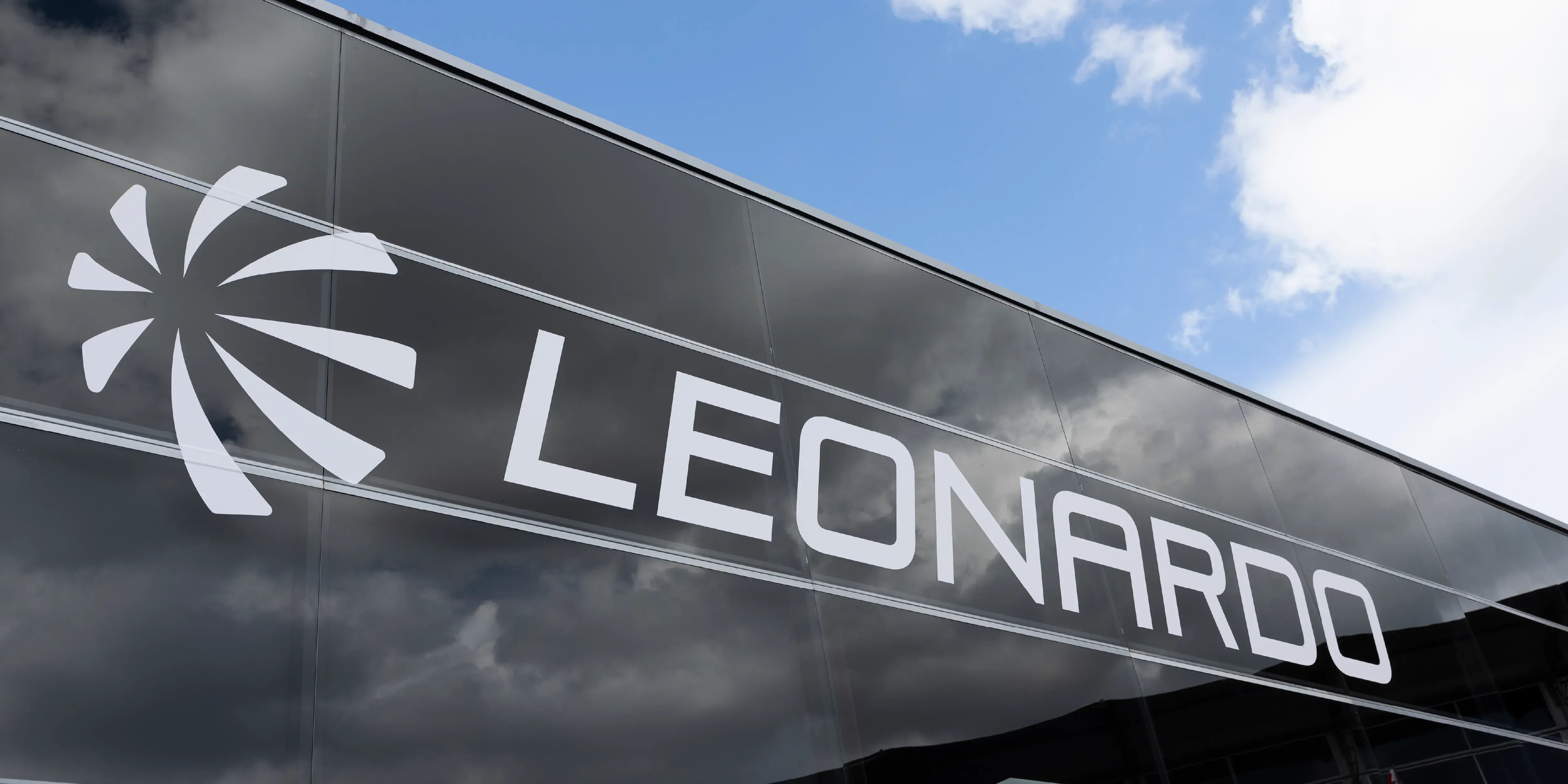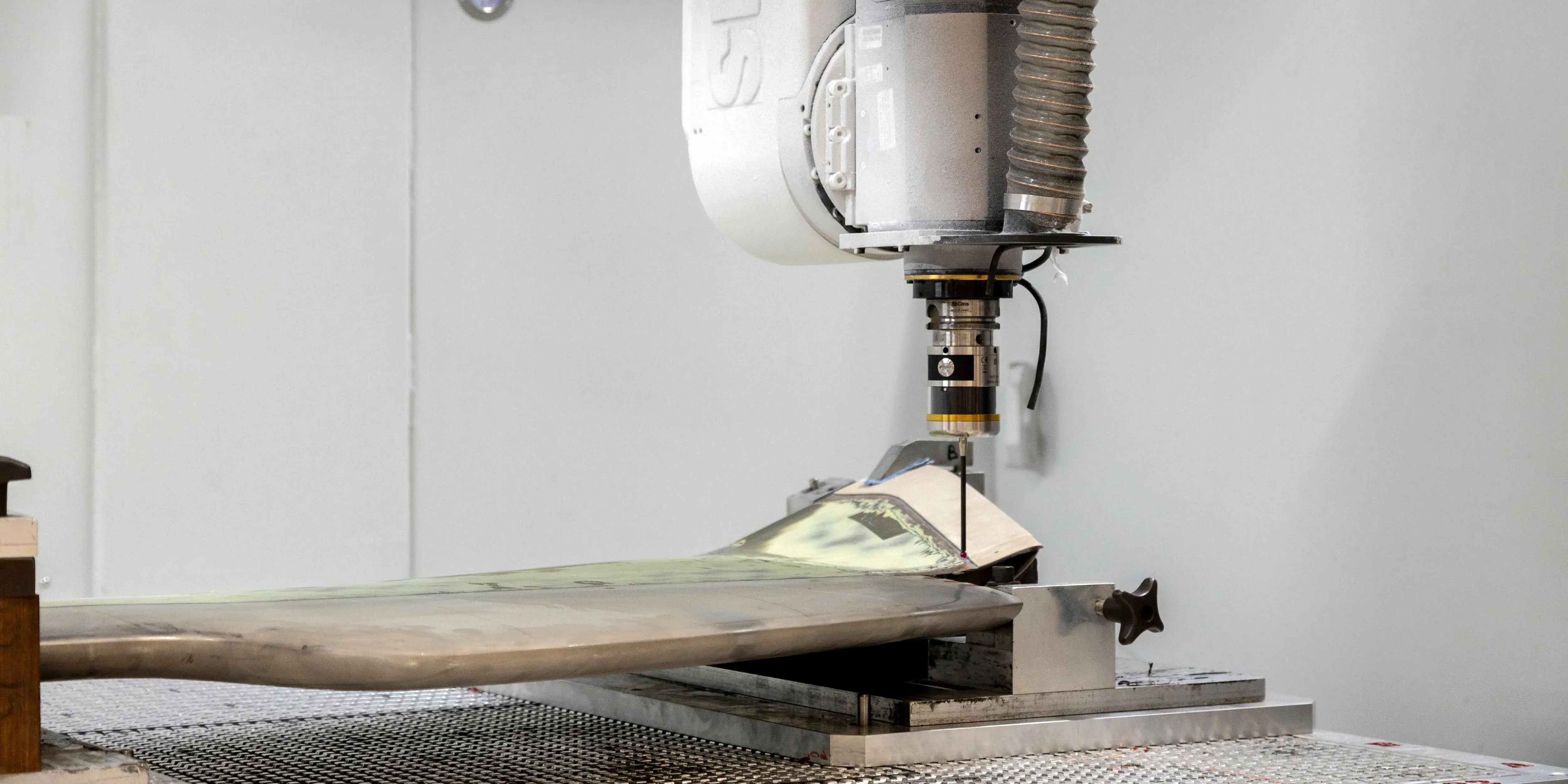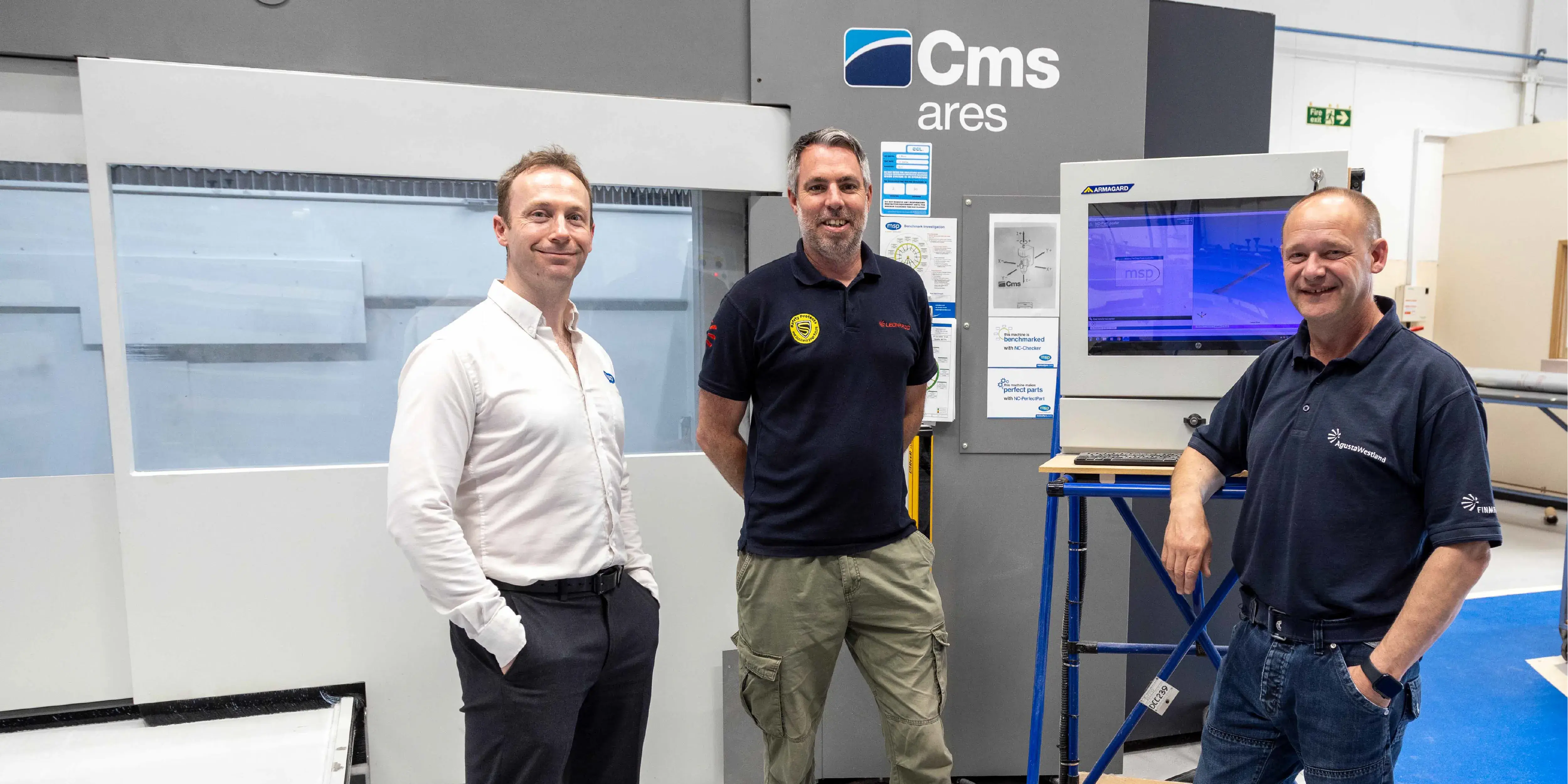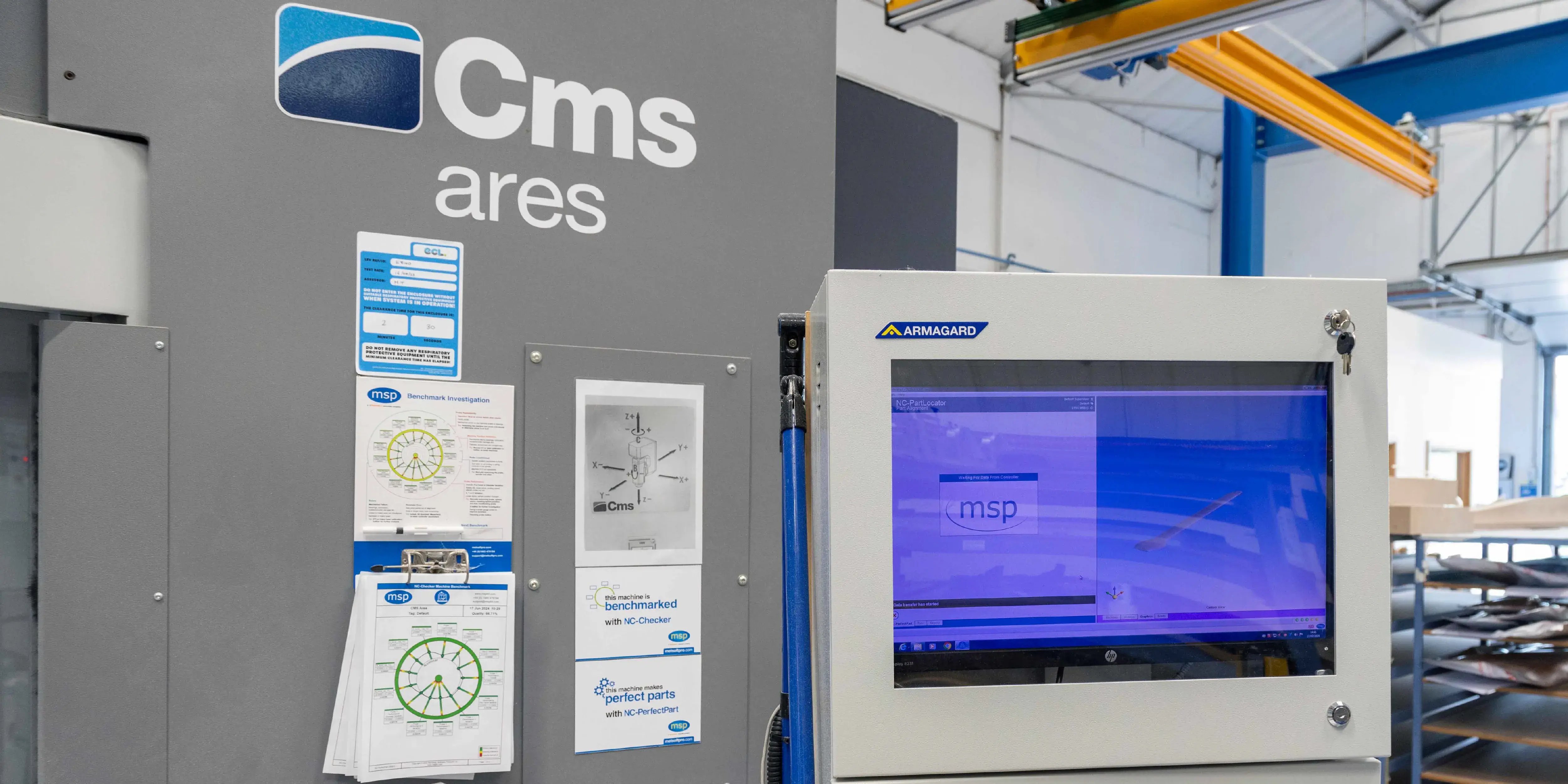
Leonardo reduces production time from 20 weeks to 3 days
At a glance
A global manufacturing group is now producing ‘impossible to manufacture’ parts following the implementation of CNC metrology solutions from MSP. This technology reduced the production time of the tiltrotor blades for one of Leonardo’s helicopters from an estimated 18-20 weeks to a repeatable 3-4 days, with the part alignment process itself being reduced from days to 5 minutes. MSP’s technology saved any blades from being scrapped and gave the manufacturing giant the confidence in its processes and CNC machine tool.
Part Setup Time
Alignment of the blades only takes 5 minutes due to NC-PartLocator's ability to automate part setup and compensate for distortion.
Increase in Productivity
MSP reduced Leonardo's estimated 18-20 week lead time down to 3-4 days.
Reliance on Fixtures
Leonardo no longer rely on fixtures to align the blades as fixtures are only required for holding parts when using NC-PartLocator.
Products used

Background
Global industrial group, Leonardo has multi-domain technological capabilities in many sectors including aerospace, defence and security. Its product portfolio includes helicopters, aircraft and electronics and the company is involved in multiple leading international programmes. Leonardo is concerned with innovation, continuous research, digital industry and sustainability, with these pillars influencing its business worldwide.
Leonardo contacted MSP to assist with the machining process of carbon-fibre tiltrotor blades as part of a new R&D project for one of its leading helicopter programmes. The aim for this project was to develop the production process and make the aircraft suitable for the civil aerospace industry, something which required different machining processes and inspection routines to meet the specific regulations required for civil aerospace.
Success of the project was thwarted from the outset due to the large size and complexity of the composite blades. The design of the parts includes a twist along the approximate 2 metre length, with a thin and lightweight tip, making them hard to fixture, and prone to varying levels of distortion.
To accommodate for the large blades, Leonardo allocated one of their CMS Ares machines to the project that could hold a part of that size. Managing the variable nature of the blades was more difficult to solve, and Leonardo knew they would need external help in the form of MSP.
Leonardo Machine Operator, John Hughes, explains:
“Confidence was low when this project was first introduced. The computer simulation declared the blades were impossible to make and predicted none of them would be good enough to pass final inspection and meet the necessary regulations. Thankfully, we had come across MSP’s technology before and knew this is what we needed to prove the simulation wrong and produce the blades accurately and in a timely manner”.
John Hughes, Leonardo Machine Operator

Challenge
Variability of the tiltrotor blades is caused by the inherent challenges of composite materials. Errors can be introduced by non-uniform layup and distortion due to curing/cooling processes on the part.
The distortion on Leonardo’s tiltrotor blades posed massive challenges, as David Madigan, Leonardo Tooling Design Engineer, comments: “Every blade is different, not one is the same and they always have some degree of distortion. The blades can be twisted or bent and it’s unknown by how much. It’s just a fact when working with composite material but, for this project, it meant the blades would be impossible to machine accurately using traditional alignment methods. Normally, we would probe and measure parts using the CAD but when the blades don’t conform to this data, that’s when problems occur”.
These problems would have included struggling to find the actual position of the part on the machine or the blades twisting and bending further due to the need for multiple operations. David continues: “To achieve the accuracy needed, it would have been a time-consuming process. Based on previous experience, it was estimated production would take 18-20 weeks due to having to accommodate for distortion in the part alignment process. And even with this long setup time, it wasn’t even guaranteed the parts would pass final inspection after they had undergone the necessary trimming and drilling processes”.
These issues would have also been compounded by various environmental effects across the factory. The temperature of the building can change dramatically throughout the day and this heating and cooling effect causes the blades to twist and bend even more. Likewise, changes in machine temperature can also affect the composite blades and Leonardo have witnessed differences of up to 0.4mm when the machine is hot.
David states:
“Knowing the challenges, I would not have accepted the project if I’d had to complete it without MSP’s products. The parts may be low volume, but they’re extremely high value so you can’t make any mistakes and risk scrapping any. Furthermore, there is a target to make 12 by the end of the year. If we had a 18-20 week lead time, that just wouldn’t be possible”.
David Madigan, Leonardo Tooling Design Engineer

Solution
MSP suggested NC-Checker as a starting point to improve the machining process for the tiltrotor blades. Part of the MSP PerfectPart suite of products, NC-Checker assesses the geometric performance of the CNC machine tool to confirm if the machine is capable of producing a part to within tolerance.
The metrology software performs a series of tests in 20 minutes, including rotary and linear axis checks, to confirm whether the probe and machine are within tolerance. On completion of the tests, the software produces clear ‘Benchmark’ reports which demonstrate, at-a-glance, the condition of both and, if any errors are present, where these errors lie so they can be resolved before machining begins.
David advocates: “NC-Checker has allowed us to monitor the machine tool in a simple way and gives us the confidence that no error on the machine will negatively impact the parts. It is so powerful; we have now introduced it as a standard operating procedure. Before we machine a blade, it is a stipulation that NC-Checker is run. Then, if something does go wrong, the first question is ‘Well, did you run a Benchmark?’.
“From an operator’s point of view, it gives them the knowledge to ‘go’ or ‘no-go’. It’s a failsafe system”.
To solve Leonardo’s main challenge of accurately aligning the blades on the machine, despite the unknown amounts of distortion, another of MSP’s PerfectPart products, NC-PartLocator, was introduced.
NC-PartLocator is different to traditional part alignment methods. The software uses 5-axis probing to measure a part on the machine and generate an accurate best fit alignment in 6-degrees of freedom. Most importantly in Leonardo’s case, the software compensates for any discrepancy between the physical part location and the nominal machining program to show where the part ‘really is’ on the machine. The updated alignment is automatically uploaded to the controller and any misalignment errors are automatically removed.
David comments:
“NC-PartLocator is critical - if we didn’t have it, I wouldn’t know whether the part’s position on the machine is right or wrong. It’s good to see the alignment on the screen as it goes through its calculations. You press the button, and you can see the software’s picking up the alignment which gives you the confidence the tool will go where it’s supposed to go”.
David Madigan, Leonardo Tooling Design Engineer
John explains: “NC-PartLocator is essentially what a spirit level is to a builder. If you haven’t got a spirit level when you’re building a wall, then how do you know it’s going to be level? You need a reference to confirm what you’re doing is correct”.
As well as ensuring the part was accurately trimmed, NC-PartLocator’s capabilities also allowed Leonardo to drill holes and machine pockets on the blade even more accurately. Once the software confirmed the holes were in the correct position, it was possible for NC-PartLocator to then use a selection of these holes as a reference point to create an alignment for the pockets and compensate for the variability of the blade in this way. It also meant the holes could be aligned and drilled in one operation for a smoother process and increased accuracy.
Leonardo also invested in MSP’s NC-Inspect CATIA, a plugin for CATIA CADCAM software. This plugin has been specifically designed to be compatible with NC-PartLocator functionality to make it simpler to create the alignment and inspection programs.
This has benefitted the process further as David comments: “Using the plugin has made the transition to using NC-PartLocator much easier. It’s possible to tweak the part alignment programs to optimise the blade machining and achieve an even higher level of accuracy”.
Result
When starting this R&D blade project, Leonardo estimated they would be working to a 18-20 week lead time due to time-consuming alignment methods and a potential 95% scrap rate. Following the introduction of MSP’s products, Leonardo has been able to achieve a 3-4 day lead time with a potential 0% scrap rate.
Using NC-Checker at the start of the process and introducing it as a standard operating procedure has contributed to the elimination of scrap. David says:
"Machining wise, NC-Checker has changed everything. It has saved us countless times; it’s shown backlash in the machine or when the head position changed following a problem with the tool."
David Madigan, Leonardo Tooling Design Engineer
David continues: “We now always run NC-Checker before we do a blade, and after a service or a crash, to avoid any potential scrap. The time it takes to generate a Benchmark report is minimal when compared with the cost of making a bad part”.
And it has been NC-PartLocator’s ability to detect distortion and automatically compensate for it, that has been the breakthrough needed for this project. John confirms: “It takes us longer to setup the tooling than it does to setup and probe the part. We can do the part alignment in 5 minutes with NC-PartLocator. In comparison, it would take us days if we were using traditional alignment methods”.
David adds: “NC-PartLocator’s alignment results can be quite surprising. The software often shows that the blade should be somewhere else entirely, even when it doesn’t look any different on the surface. Without MSP’s software, we would have had no idea and we’d be scrapping every single one otherwise”.
"The tiltrotor blade is the most intricate part we machine and to have no scrap is an impressive achievement."
David Madigan, Leonardo Tooling Design Engineer

The company also no longer needs to rely on fixtures to align the blades as, when using NC-PartLocator, fixtures are only required for holding the part. David explains: “The difference between MSP and traditional methods is night and day. It’s so easy - rather than moving the part, you move the machine to the part instead. I designed the fixtures based on this fact. All I needed to do was hold the part in position so it could be probed, as that was the most important thing. It didn’t matter that the blades were all variable and the position wasn’t correct as I knew the software would compensate for that. It makes things more straightforward”.
David summarises: “Without MSP, this project wouldn’t have progressed past the first stage. They have made the impossible, possible - I truly believe we wouldn’t have machined a blade correctly without MSP. If you have problems setting parts up, their software is what you need. Probing is not enough on its own. If you have anything technical, if there’s a rotation in there, or you have parts that are even slightly distorted or oversized, MSP’s metrology solutions are the answer”.
Future
Looking towards the future, Leonardo plans to productionise the project once the R&D stage is complete.
David concludes: “Once productionised, the whole manufacturing side will be MSP, and we are looking to invest in a bigger machine. Together, this will allow us to move to one operation instead of the three it currently takes, and I predict we’ll be making one blade a day and increase the accuracy of the process even further.
“I also hope to use MSP’s products for new parts and processes. What we can do with the software is endless - it feels like we’re just getting started”.
Be in a case study.
If you’ve had impressive results and want to be involved in your own case study, we want to hear from you! It’s a great way to shout about the collaboration between our great companies.







